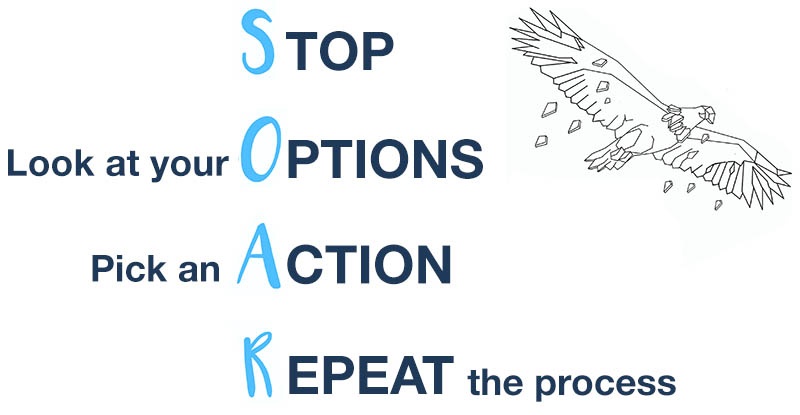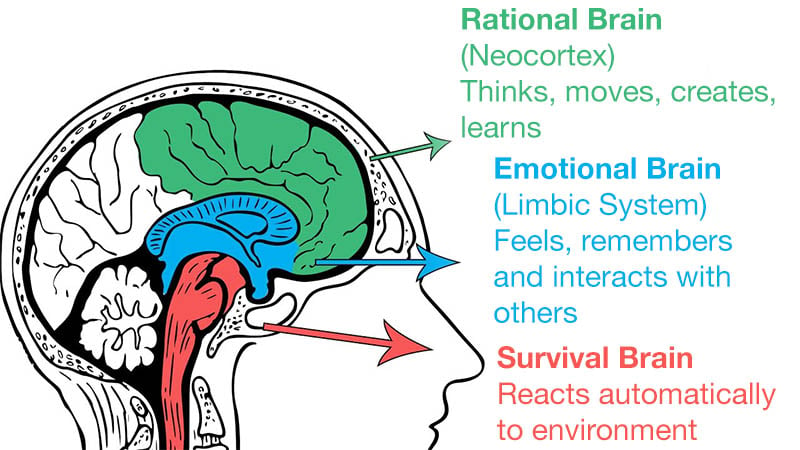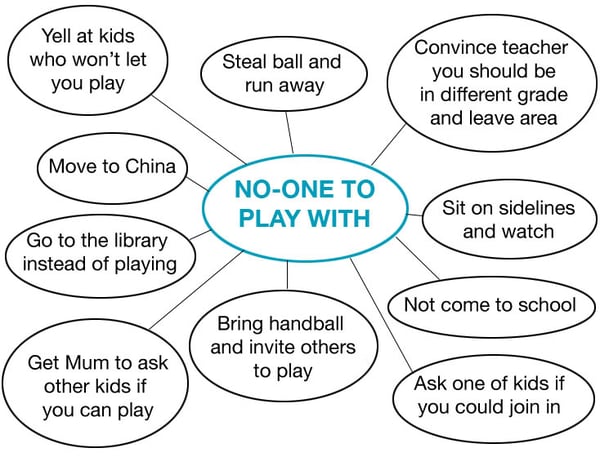
Anxiety is currently the most common health condition in Australia. Anxiety disorder affects:
• 1 in 4 people
• 1 in 3 women
• 1 in 8 men
• 14 % of the population
40% of all people will experience a panic attack at some point in their lives.
At the age of six to seven, 14% of Australian children display noticeably high levels of emotional problems, including anxiety, depression, headaches and withdrawn behaviour. At the age of 10-11, this rate has increased.
At King's parenting seminar: “How to Deal with Anxiety – A Parent’s Guide”, held on 15 August 2018, counsellor and educator, Liz Giovas, presented the latest psychological research and recommendations in a digestible form to 200+ parents. Liz set out some practical principles for parents to use in the home to help stop their child’s anxiety in its tracks.
For parents who were unable to attend the presentation, here is a summary of Liz’s main points.

About Liz Giovas
Liz has over 20 years' experience helping people as a teacher, counsellor and parent. She has taught in private and government schools and has counselled children, couples and families in educational and clinical settings.From a deep desire to see all people living their best life, Liz brings wise guidance and practical tips and strategies for navigating the challenges of everyday life.
♦Bachelor of Education ♦ Advanced Diploma of Counselling and Family Therapy ♦ M.A.C.A (Level 1 )♦ Careforce Lifekeys Facilitator ♦ www.shininglifeskills.com.au
Anxiety vs Anxiety Disorder
Anxiety = worry/nervousness/unease about something with an uncertain outcome.
Some anxiety is good for us – it makes us conscientious, organised and responsible. And there will be periods in everyone’s life where they feel anxious and unsettled about something that worries them. This is a normal.
Anxiety Disorder = a medical condition presenting as persistent, excessive worry.
This is a mental illness that requires professional help from a GP, counsellor or psychologist. If you think your child has anxiety disorder, do not delay in making an appointment with your GP.
Some children are more disposed to anxiety than others but, with the right techniques, enough sleep and good parenting, they can learn how to manage anxiety and could be less likely to develop a mental disorder later down the line.

Empathy vs Sympathy
Parents who don’t feel anxious (or who feel anxious about different things to their children) often deal with their child's nervousness by saying things like:
“What’s the problem?
“Just do it!”
“Stop worrying”
“It’s not that big a deal”
“Be brave”
But being brave isn’t that easy to do.
Liz played a Dr Brené Brown video to illustrate the difference between sympathy and empathy.
Empathy is about getting down to the other person’s level, not judging, recognising their feelings and perspective and connecting with them.
Sympathy is feeling compassion, sorrow and pity and expresses itself in:
- “At leasts…”
(“At least you didn’t come last”, “At least you get another chance tomorrow”, “At least you didn’t get hurt”) - Silver Linings
(“It will make you a stronger person”, “You’ll be glad about that one day”) - Dismissing
(“What are you so worried about?”, “That’s not important!”)
Some parents have so much sympathy for their kids that they protect them from ever letting them struggle at all.
However, to help and support their children, parents need to be empathetic, rather than sympathetic.
SOAR
Liz introduced the parents to a SOAR, a simple acronym she uses to help anxious children stop, be calm and choose rationality:

STOP
How can I help my child stop their busy brain?
Do I need to stop my busy brain?
Some people believe their emotions are responsible for their thoughts - that they can't help how they feel - but this is not accurate.
Feelings and emotions come AFTER thoughts:
Thoughts > Feelings > Actions
By changing our thoughts, we can alter the way we feel about things.
Fight, flight or freeze?
It is often the 'accidental' thoughts that come into our minds that cause strong emotions - the thoughts we have when something seems dangerous to us or when we are suprised. People react to this in different ways:
Fight – teenagers will often argue and fight you verbally when they are anxious.
Flight – anxious toddlers will literally run off.
Freeze – anxiety can make some children silent and unresponsive, which can look like disobedient behaviour.
Anxiety is like a false alarm going off permanently. Things look like bigger dangers than they actually are.
Triune Brain Model
Liz displayed a simplified illustration of the three parts of the human brain and talked about ‘Upstairs’ and ‘Downstairs’ thinking.

Upstairs thinking (upper part of brain) is when the brain is functioning well, logically and emotionally.
Downstairs thinking (lower part of brain) is when a person is ‘flipping their lid’ and losing all control.
“If there is ONE THING you take home tonight,” said Liz, "I want it to be this:"
There are times when people choose to be an emotional reactor but others when they have LOST CONTROL of their emotions. In this case you have to get them to calm down first.
No-one ever calmed down by being told to calm down!
If a child (or indeed an adult) is in a state of intense distress, don’t try to ‘help’ them with reason and advice. The first step is to calm them down.
How to help your child calm down
This very much depends on your child, their triggers and what works for them. (Liz recommends the book ‘The Five Love Languages’, by Gary Chapman, to help you identify what is most important to your child.)
Calm your child down in their way but don’t use iPads or Netflix! Screen time does not help an anxious child.
Here of some activities that may help calm your child down, depending on their personality:
- Colouring-in
- Coming up with list – eg top 10 favourite ice-cream flavours
- Counting
- Slow deep breaths
- Listening to or playing music
- Dancing
- Distraction
- Talking to a friend
- Reading
- Exercise
- Physical contact, eg hugging (on child’s terms)
- Going outside
- Nature watching / listening
- Organising/rearranging something (eg bedroom) – unless child has OCD
How to avoid anxiety 'triggers'
- Give as much warning as possible before you expect them to do something, eg “We are going to leave in 10 minutes”. Boys, especially, like to finish tasks before they do anything new so if they are in the middle of a Lego project and you need to leave for school, give them plenty of notice in advance.
- Be reasonable – don’t expect children to do something or behave in a certain way that they are too immature or inexperienced to succeed at.
- Remember that your children aren’t always like you. What makes you anxious may be different to what makes your child nervous. We all have different personalities and triggers.
- Don’t try to remove all the ‘stress’ from your children’s lives. It is important to help them learn how to deal with it rather than never let them have the opportunity to conquer it (eg don’t write notes to school to get your child out of dreaded tests or sports, don’t drive back home to collect the hat they’ve forgotten).
What do I know is true?
For every worrying thought, there is a true and helpful thought. Help children research facts and statistics, at an age-appropriate developmental level, to reassure them and show them the difference between perceived threat and fact.
Look at your OPTIONS
Help your child brainstorm options for dealing with their problem or fear.
Have fun with your ideas – you can include silly and unsuitable ones. Get your child to join in too. In the example below, a child is anxious because they are alone at play time and feel that they have no-one to play with. So what are their options?

Obviously, some of these ideas are crazy (Move to China), some could have unpleasant consequences (Steal ball and run away) and others are just inappropriate (Get Mum to ask other kids if you can play). Collaborate with your child in identifying as many options as possible and investigate the pros and cons of each one.
Pick an ACTION
Once you child has identified their most effective option or options, it’s time to help them act on it. Of course, for the anxious child, knowing which option to choose is a million miles away from following through with it.
In the example above, the child may decide on the option of taking a handball to school and inviting people to play but the thought of approaching people or talking to them might be utterly overwhelming.
Laddering
Liz introduced the concept of exposure therapy or ‘laddering’ to help kids act on their chosen option.

The end result of a chosen option (eg taking handball to school and inviting people to play) is placed at the top of the ladder. The ways of getting there are then broken down into smaller steps.
For example,
Step 1 – Buy a handball
Step 2 – Take a handball to school but keep it in bag. Just know that you’ve got it.
Step 3 – Just walk across the playground holding the handball so that the other kids can see it but you don’t have to speak to anyone.
Step 4 - Bounce the handball in the playground
etc
Each stage may take days or weeks to complete but it is important that the child keeps moving in the direction of completing the action at the top of the ladder, even if it's just baby steps over a long period of time.
Rather than shielding children from things that make them nervous, we need to empathise with them and reinforce the idea that things might be unpleasant and that they won't feel like doing it but that they CAN do it - just keep them moving in the direction of the top of the 'ladder'. This will teach them persistence, resilience and life skills.
Reward each completed stage - if they've worked hard and conquered something that scared them, a small reward can really speak into the child. This may be something like a Coles Little Shop packet, a McDonald's Happy Meal, some stationery or watching a TV show with the family.
When your child reaches the top of they 'ladder', they will look back and be proud of what they have achieved. This will build their confidence and self-esteem and help them next time they need to repeat the process.
REPEAT the process
Is it going well?
Do I need to change something?
Some kids get distressed when things don't go to plan. Others are perfectionists who get anxious when they make a mistake.
Mistakes will happen and mistakes are OK - this is how we learn. If your child has picked a wrong option and made a mistake, encourage them to try again another way.
As a parent, model how you deal with your own mistakes - don't be a perfectionist yourself. Use humour, apologise if necessary, show your children how you bounce back and try again.
(Liz recommended the book 'The Girl Who Never Made Mistakes', by Mark Pett, for your child's bibliotherapy!)
The Psychology of Change
Am I being too hard on my child?
Am I making life too easy when (age-appropriate) changes arise?
Liz recommended that parents build a community of people around them to help normalise situations. When you realise that other people's children are going through the same 'phase' as yours at the same age, it helps give you some perspective. It also helps you gauge what is 'normal' for children in your kids' age groups.
Sleep, exercise and eating properly
These are staples for everyone's mental health. Many children are not getting enough sleep, spend too long sat in front of screens and eat junk food.
Role modelling
Parents should model how they behave when they feel nervous. It's not good for children to think you're never afraid - let them know you get anxious and show them how you deal with it.
Support / Challenge Balance
Liz outlined the four parenting models, based on the support/challenge balance:
- Neglectful parenting - low on both support and challenge
- Permissive parenting - high on support, low on challenge. Parents typically set low boundaries and give unrealistic encouragement .
- Authoritarian parenting - high on challenge, low on support and emotional connection.
- Authoritative parenting - high on support and challenge.
Good parenting - the kind that raises secure, confident, resilient children - needs to be authoritative: High on supporting the emotional, physical and spiritual needs of their children while challenging them to push past their fears and limitations.
"How to Deal with Anxiety - A Parent's Guide" was hosted by King's Student Wellbeing team.










